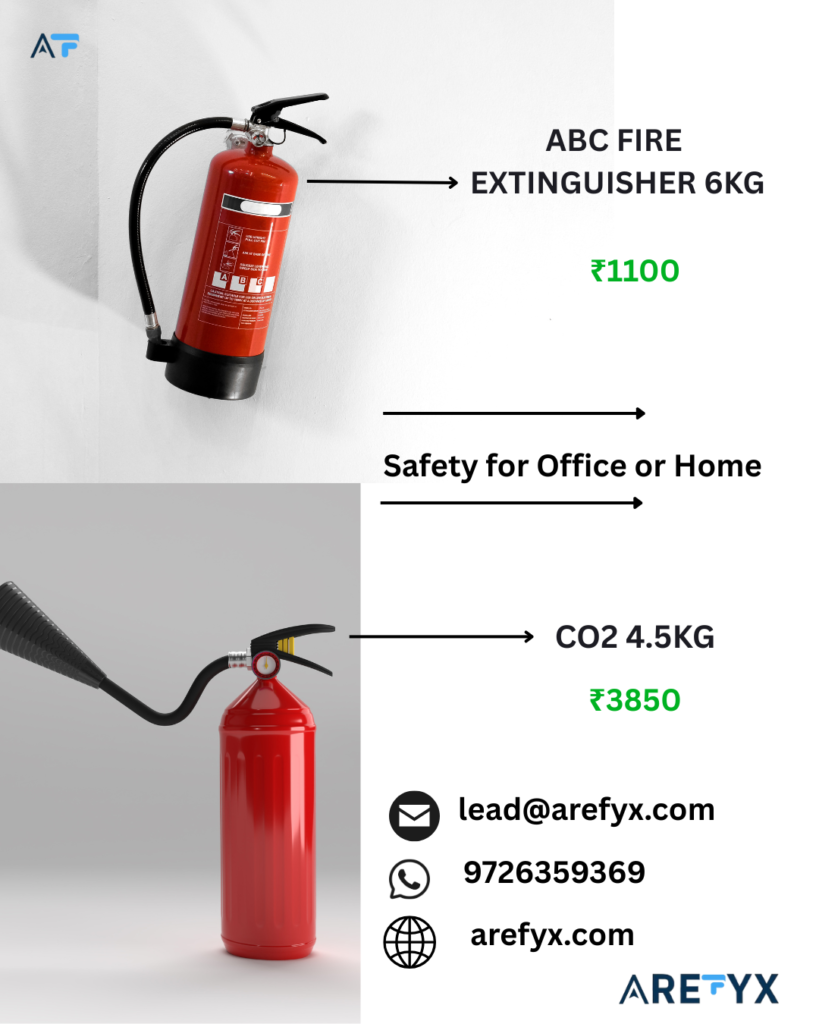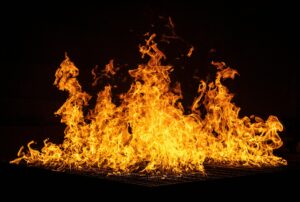
Fire accidents can happen anytime, anywhere. In such situations, a fire extinguisher is a vital tool that helps control or extinguish fires. However, fire extinguishers come in various types, and each type is suitable for different kinds of fires. Let’s understand the types of fire extinguishers and their uses in detail.

Types of Fire Extinguishers
There are mainly five types of fire extinguishers, each designed for specific types of fires:
- Water Fire Extinguisher
- Foam Fire Extinguisher
- CO2 (Carbon Dioxide) Fire Extinguisher
- Dry Powder Fire Extinguisher
- Wet Chemical Fire Extinguisher
Now, let’s understand each type one by one.
Water Fire Extinguisher
Explanation:
Water fire extinguishers are the most common and oldest type. They work by cooling the burning material below its ignition point, effectively putting out the flames.
Where to Use:
- Suitable for Class A fires involving solid materials like wood, paper, cloth, and plastics.
- Commonly used in homes, schools, offices, and public buildings.

Where Not to Use:
- Not suitable for fires involving flammable liquids, gases, or electrical equipment.
2. Foam Fire Extinguisher
Explanation:
Foam fire extinguishers work by forming a thick layer of foam over the burning material, cutting off the oxygen supply and cooling the fire at the same time.
Where to Use:
- Effective for Class A (solids like wood and paper) and Class B fires (flammable liquids like petrol, diesel, and paints).
- Common in warehouses, petrol stations, and garages.

Where Not to Use:
- Not recommended for electrical fires.
3. CO2 (Carbon Dioxide) Fire Extinguisher
Explanation:
CO2 fire extinguishers release carbon dioxide gas, which displaces oxygen around the fire and cools the flames, stopping the fire quickly.
Where to Use:
- Ideal for Class B fires (flammable liquids) and electrical fires.
- Frequently used in server rooms, electrical equipment areas, and offices.

Where Not to Use:
- Not effective for Class A fires involving solid materials.
4. Dry Powder Fire Extinguisher
Explanation:
Dry powder extinguishers spray a fine powder that smothers the fire by cutting off the oxygen supply and interrupting the chemical reaction.
Where to Use:
- Known as a multi-purpose extinguisher.
- Suitable for Class A (solids), Class B (liquids), and Class C (flammable gases) fires.
- Often used in industrial areas, workshops, and fuel storage facilities.
Where Not to Use:
- Not ideal for indoor use as the powder can reduce visibility and be hard to clean up.
5. Wet Chemical Fire Extinguisher
Explanation:
Wet chemical extinguishers contain a solution that reacts with hot cooking oils and fats, forming a soap-like layer that seals the surface and cools the fire.
Where to Use:
- Specifically designed for Class F fires (cooking oils and fats).
- Common in commercial kitchens, restaurants, and catering environments.

Where Not to Use:
- Not suitable for electrical or flammable gas fires.
Conclusion
Understanding the different types of fire extinguishers and their uses is crucial for fire safety. Using the right extinguisher not only helps control the fire effectively but also prevents further damage and injuries. Always ensure that your home, office, or workplace is equipped with the correct fire extinguisher according to the potential risks.
Bonus Tip:
Regularly check and maintain your fire extinguishers to make sure they are always ready to use in an emergency!

